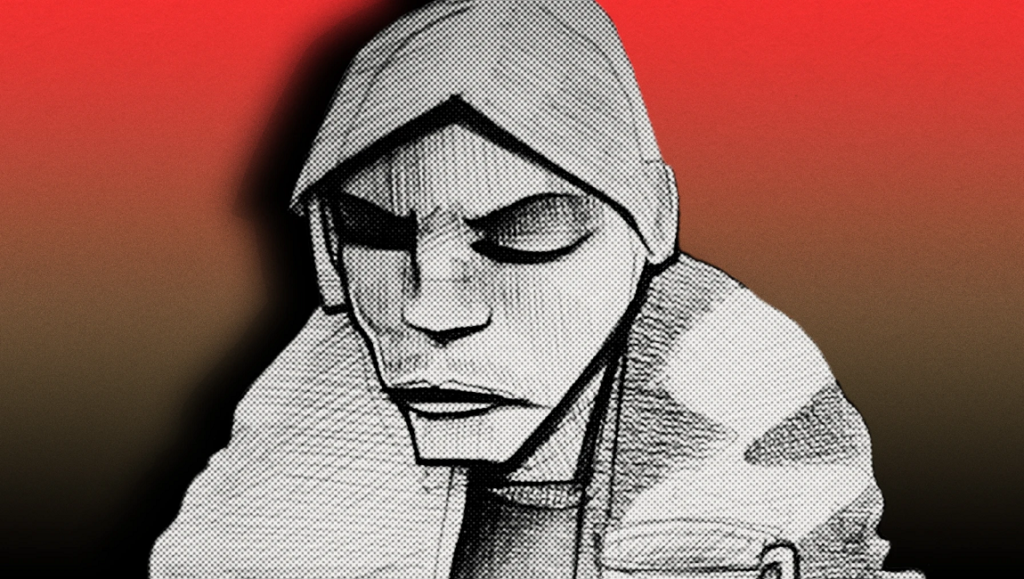When William Bevan (a.k.a Burial) was working on the original tracks for the follow-up to his 2006 freshman release, he “took ages on them” (per a 2007 interview with Mark Fisher for The Wire). At this point, his identity was still unknown to the public, despite the popularity and acclaim his self-titled dubstep LP had received the previous year within his native Great Britain. Pressure to deliver on his second full-length record and create more technically complex music had led him to learn new production software and craft darker tunes. Yet, he ultimately chose to scrap this collection of songs and instead composed an entirely new album in two weeks using SoundForge, a rudimentary digital audio editor. The result is Untrue, a record that often glances back wistfully at a lost era of UK dance music while nonetheless wandering forward with a trepidatious sense of hope.
Bevan was too young to attend raves during the golden era of dance music in the late-’80s and early-’90s United Kingdom. Instead, he was introduced to the exhilaration of the scene through his older brother, who returned home from junglist parties with exotic stories and mysterious records to which Bevan often fell asleep listening. These novel childhood experiences offer insight into the haunted feelings of longing and melancholia that permeate Untrue; the album is not a collection of tracks made for the modern dance floor, but a requiem for a lost musical era and landscape that was never fully experienced by its composer.
A slight generational gap left Bevan and countless other young British music lovers on the outskirts of a cultural phenomenon. The corporate club empire that later developed out of the scene was entirely at odds with its initial anarcho-utopian ideals, fostering a sense of alienation, but also one of awe for what was and could have been. Detached from the physicality of the rave and left with nothing but songs out of context, they were able to construct their own mythology of UK dance music and culture at large. This sensibility is found throughout Burial’s entire discography, and results in a sound that follows distinctly in the lineage of British club music while simultaneously exploring its sonic landscape through the eyes and ears of an outsider. Bevan isn’t a raver, but a dreamer, and it is this ethos of dreaming that keeps Untrue from feeling wholly downtrodden — even the album’s darkest moments are tinged with a misty sense of wonder that elicits a mild, glowing euphoria.
Although Untrue’s softly brooding track-list is definitively not club-ready, the record still delivers a catchy collection of music that sleekly wiggles its way into the listener’s subconscious. Sonically, the album falls somewhere between the avant-dubstep of Bevan’s debut and the stepping, rhythmic structure of UK garage. After setting a bleakly twinkling mood with a short ambient intro, the album leaps into “Archangel,” a track that oozes emotion while remaining swiftly composed. The stuttering, off-kilter percussion alludes to the album’s creation in SoundForge; the program lacks the ability to quantize drum patterns, and so the standard uniformity of rhythm in dance music is noticeably absent. Yet, the hobbling, handmade drum sequences that fill the album only add to its dark grooviness. A perfect example is found in a swift breakdown that hits after a string section in “Near Dark,” which uses the sound of bullet shells hitting the floor from Metal Gear Solid as hi-hats.
Found sounds are a staple of Untrue, and each track feels like a sonic collage of lost recordings trying to find their way through a dystopic labyrinth. Of the many archived sounds on the record, vocal samples are some of the most prominent, and are often pitch-shifted to the point where gender becomes unrecognizable — male singers shriek in vulnerable high register, and female vocals form deeply crooning melodies. Two of the most striking instances occur on “Endorphin” and “Dog Shelter,” fully ambient tracks in which sung words blend so intimately with the surrounding atmospheric soundscape as to become part of the fabric of the instrumentation. There is no filler on Untrue, and these shorter recordings serve as symbolic waypoints along the album’s winding journey, breaking up the longer rhythmic numbers and forming a sense of thematic place. They also hint at the longer, experimental work that Bevan would continue on to release later in his career.
The record closes with “Raver,” its most upbeat track and the closest to a conventional club number. In a way, this outro feels cautiously optimistic, offering a firm sense of closure after the emotional highs of “Homeless” and the achy comedown of the aptly titled “Uk.” Perhaps this closing trio best illuminates Untrue’s difficult relationship with modern British culture: its corporatized fall from grace would not have been possible were its core not so sublime to begin with. It seems fitting that “Raver” concludes by breaking up into vinyl static and repeating itself like a warped record left on overnight. Even if there are no more flyers to be found detailing the secret location of an upcoming underground party, the records that would have been played are still circulating the isles, whispering their stories to those willing to dream.
Part of Kicking the Canon – The Album Canon.


Comments are closed.